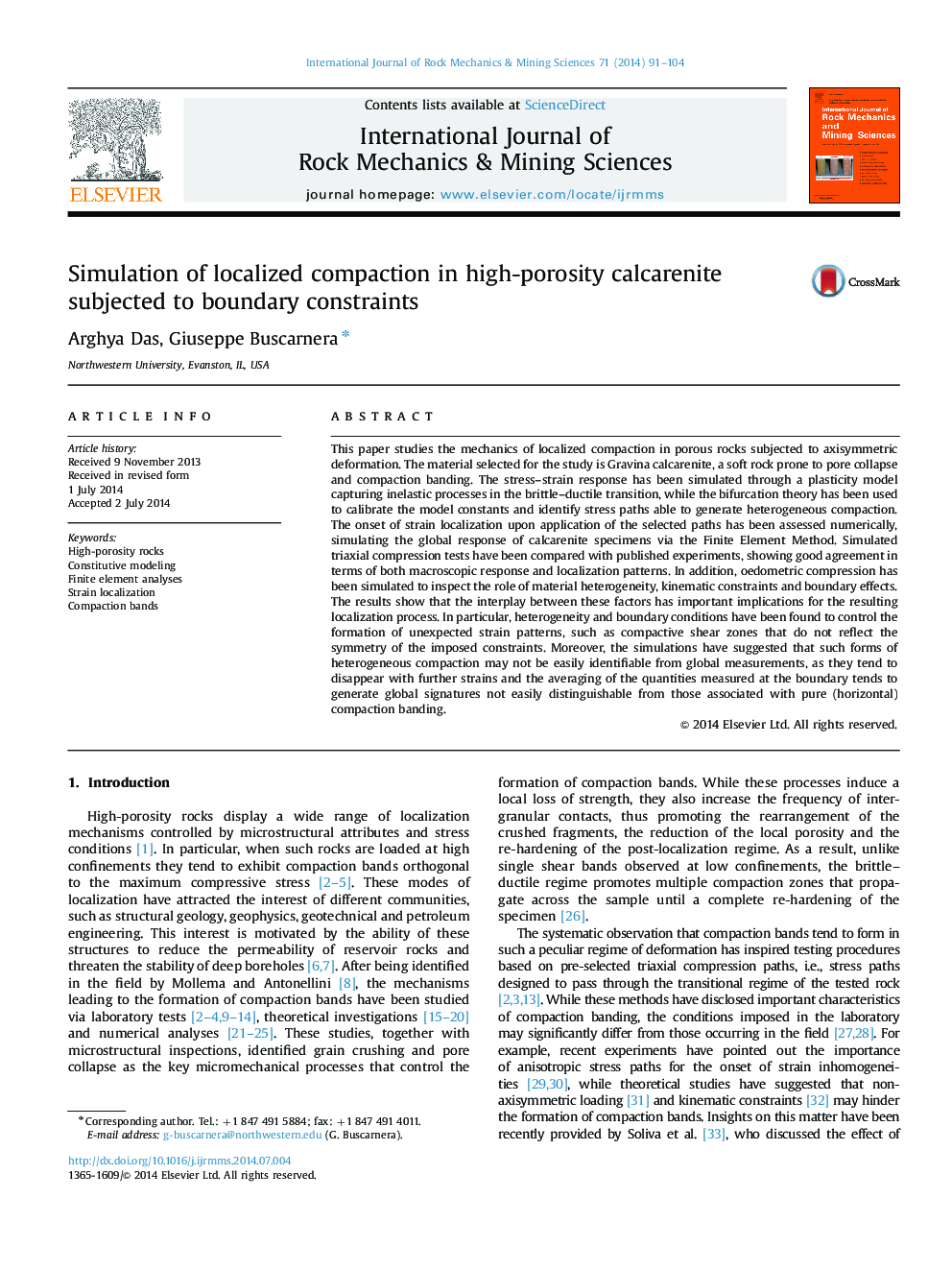| Article ID | Journal | Published Year | Pages | File Type |
|---|---|---|---|---|
| 7206694 | International Journal of Rock Mechanics and Mining Sciences | 2014 | 14 Pages |
Abstract
This paper studies the mechanics of localized compaction in porous rocks subjected to axisymmetric deformation. The material selected for the study is Gravina calcarenite, a soft rock prone to pore collapse and compaction banding. The stress-strain response has been simulated through a plasticity model capturing inelastic processes in the brittle-ductile transition, while the bifurcation theory has been used to calibrate the model constants and identify stress paths able to generate heterogeneous compaction. The onset of strain localization upon application of the selected paths has been assessed numerically, simulating the global response of calcarenite specimens via the Finite Element Method. Simulated triaxial compression tests have been compared with published experiments, showing good agreement in terms of both macroscopic response and localization patterns. In addition, oedometric compression has been simulated to inspect the role of material heterogeneity, kinematic constraints and boundary effects. The results show that the interplay between these factors has important implications for the resulting localization process. In particular, heterogeneity and boundary conditions have been found to control the formation of unexpected strain patterns, such as compactive shear zones that do not reflect the symmetry of the imposed constraints. Moreover, the simulations have suggested that such forms of heterogeneous compaction may not be easily identifiable from global measurements, as they tend to disappear with further strains and the averaging of the quantities measured at the boundary tends to generate global signatures not easily distinguishable from those associated with pure (horizontal) compaction banding.
Related Topics
Physical Sciences and Engineering
Earth and Planetary Sciences
Geotechnical Engineering and Engineering Geology
Authors
Arghya Das, Giuseppe Buscarnera,
